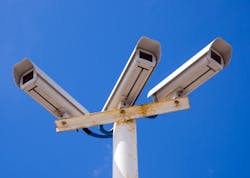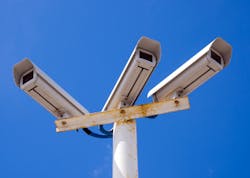Video Surveillance Solutions for Harsh and Rugged Environments
When designing a robust video surveillance solution for harsh and rugged environments, it’s important to define the unique challenges of any environment upfront. Naturally, we want the cameras and supporting equipment to last as long as they can, so where they are placed in the environment also matters. Temperature, water, dust and vibration all come into play. Beyond simply surviving, the cameras may also be required to perform in extreme lighting conditions. Successful deployments in such environments require additional research and planning.
The Environment
Harsh environments vary widely. Is a camera going to be exposed to corrosive saltwater marine environment, or is it the extreme temperatures in a Texas oil field or refinery? Will the camera be exposed to frequent high-pressure chemical sprays at a food processing plant or is blowing dust or sand trying to make its way into the housing? Maybe the camera needs to be explosion-proof?
Depending on how you define it, harsh and rugged environments deviate greatly from one job site to another. Since all outdoor cameras require basic protection from moisture and dust, most cameras are designed with adequate protection from the basic elements. Designing for the worst-case scenario means it’s important to look beyond the basics to precisely what’s in the air and water surrounding the camera. Seawater is a perfect example of a corrosive environment that can destroy a camera prematurely if the camera is not designed for it. While heavier stainless-steel cameras work well when deployed in marine environments, there are new lighter, marine-grade aluminum cameras now available. Indoor environments can be just as corrosive when aggressive chemical cleaners are used to sanitize all surfaces. Stainless steel housings are a necessity for cameras in marine or other harsh chemical environments. The bubble in front of the lens is also vulnerable, so material like nylon is often used to resist corrosion in front of the lens.When bad weather and darkness combine, nothing sees better than radiometric thermal cameras. Perfect for surveillance, they are also useful for monitoring temperature extremes and sending alerts regarding the status of important infrastructures such as pumps, motors, flares and tanks.
Mounting options add complexity.
Will the camera be fixed, or is it to be mounted on a vehicle such as a train or bus? A waterproof camera on the side of a building is different from a waterproof camera on a bus going through a high-temperature, high-pressure steam wash. It’s for this reason that there are many different standards ratings for both solid particle and liquid ingress protection. IP code ratings provide a way to independently test and certify a product’s ability to reject ingress of water and dust. IP6K9K is currently the highest rating for both dust and protection from high-temperature pressure washing. Vibration and shock are also important considerations in moving environments. A suitable camera should have gyroscopic sensors and digital image stabilization (DIS) to reduce motion blur and deliver sharp, stable images.
Temperature Extremes
The effect of hot and cold temperatures on cameras and recording equipment can be just as important as water and dust protection. Even more important can be the effects of rapid changes in temperatures. A bus parked in a freezing parking lot that gets started and suddenly has all the heaters running on full can quickly fog up a camera lens. Some cameras have built-in heaters to minimize cold temperature extremes and keep lenses clear, while others need a way to dissipate heat.
Harsh Mobile Environments
A mobile NVR (Network Video Recorder) has its own challenges in-vehicle environments. Operating temperatures are extreme and fan-cooled systems can quickly fail because of dust, which makes it important to find a mobile NVR that utilizes a fan-less design. Rugged mobile NVR units typically employ large heat-sinks (fins) in the outer housing to dissipate heat without the use of a fan. Keeping dust and debris away from sensitive electronics is critical to long life. Because vibration is also an important factor, recording equipment should have no moving parts and storage components should utilize SD cards or solid-state drives.
Harsh Lighting Conditions and Image Quality
Most cameras can deliver solid performance in daylight. It’s more difficult for cameras when the light disappears. IR (infra-red) light is one answer, but most IR lights have a fixed distance of illumination and can make it difficult to discern details when color is lost. It’s possible to choose cameras with extreme low-light sensitivity that can still provide reliable color information. Cameras with a wide dynamic range (WDR of 120-150dB is ideal) that can consistently reproduce detail from shadows even in high-contrast lighting conditions are a necessity for many deployments. Frames per second (fps) can impact WDR performance.
It’s important to find a balance between fps and lighting requirements to deliver the WDR required without sacrificing smooth motion capture. AI-based algorithms can also reduce image noise by identifying object motion and reducing blur in low light environments. As camera resolutions go up, so does the required bandwidth to carry those images to a recorder, viewer or VMS. An important attribute to cameras mounted in harsh and rugged environments is the ability to reduce the bandwidth required with little impact on image quality. AI-based technology has made significant inroads by being able to detect objects and focus maximum video quality on detected objects in a scene while scaling back encoding on the rest of the scene. This coupled with compression technologies like H.265 delivers high-quality images that are possible over slower connections.
Analytics on the Edge
Just because the environment is harsh, it doesn’t mean you have to sacrifice performance. Intelligent in-camera analytics is a crucial part of any surveillance system, and rugged environments benefit from both video and audio analytics when it comes to alerting staff to important events. AI-based analytics are advancing the utility of security systems in ways many never imagined. Having AI on the edge, in the camera reduces system cost and complexity over systems that require servers to run algorithms on decoded video streams. With the ability to detect people and vehicles, false alarms are a thing of the past for any form of motion detection.
A suitable suite of tools should include behavior analytics such as appear/disappear and loitering. Passing a virtual line, enter/exit, and directional detection are also important. A good camera should know whether it’s been tampered with or if it’s just a foggy day. Thanks to AI, analytics such as people counting, heat maps, and queue management are more accurate than ever. An example might be a Muster station on an offshore platform during an emergency or drill. An AI-based camera can quickly count the number of people at each Muster station and report the number to command and control to account for everyone. If a person enters a hazardous area, a notification can be sent.
AI-based cameras provide actionable intelligence depending on an organization’s unique requirements. With object detection/classification and the ability to capture unique attributes, it’s possible to count how many white pump trucks have pulled up to a well site. Beyond video analytics, in-camera audio analytics are important tools that can detect glass breaks, explosions, gunshots, or screams and send immediate notifications to a VMS.
When conditions are at their worst, AI-based analytics helps operators see in ways that humans cannot. They never sleep, and they don’t blink, and they’re never distracted. Because of the advanced metadata that these AI-based captures, it’s important to pair them with a compatible VMS system so that all the data is available for both alerts and post-event forensic investigations.
Conclusion
While designing a surveillance system that can operate well in harsh and rugged conditions may seem complicated, there are more options and higher-quality products available than ever before. Having a thorough understanding of the environment and all the variables that a system might encounter is the first step to finding workable solutions that deliver excellent performance. A well-designed system should do more than just survive, it should provide operators with the clearest image possible under the worst conditions.
AI-based technology is just getting started. As manufacturers and third-party specialists continue to evolve and develop AI machine and deep learning algorithms, we can expect cameras to recognize even more events and behaviors. In the future, there’s no reason we shouldn’t expect to see further evolutions in AI capabilities that positively affect the health and safety of workers while protecting important assets. For example, while counting people, a system could also report if some of them are not wearing hard hats in required areas. If someone gets hit with a pipe, an algorithm can detect a human no longer standing upright after an elapsed time and issue a “man down” alert. The possibilities are endless. Best of all, because it’s software, adding new capabilities to existing camera equipment is easy, so we’re not necessarily going to have to buy a new camera to add new capabilities.
About the Author
Michael Shipley
Michael Shipley is Business Development Manager for the Oil & Gas market at Hanwha Techwin America. Request more info about the company at www.securityinfowatch.com/10215711.


